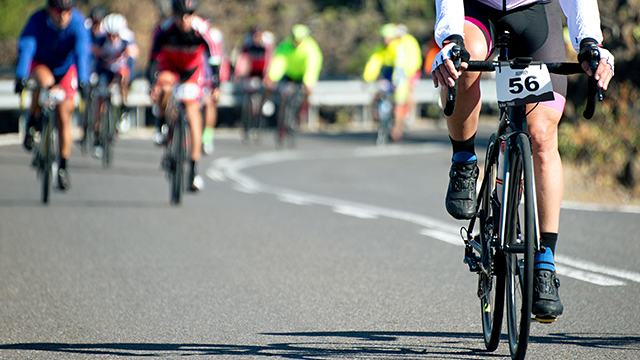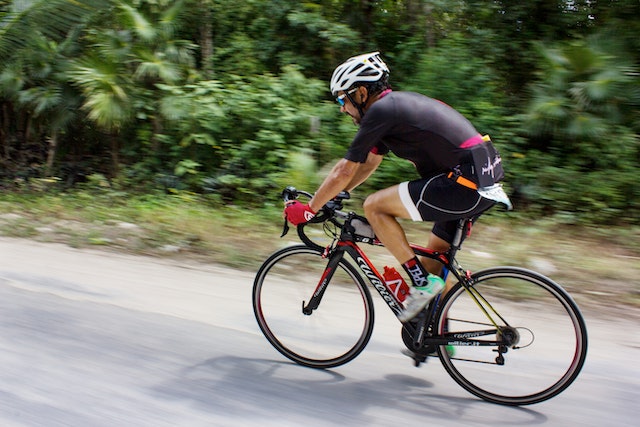Are you wondering how long you should cycle each day to achieve your fitness goals? You might be thinking, ‘I don’t have enough time,’ or ‘I’m not fit enough to cycle every day.’ But fear not! This article will guide you in determining the perfect cycling duration for your needs, regardless of your fitness level.
First, it’s important to assess your current fitness level. This will help you set realistic goals and avoid injury. Once you have a clear understanding of where you stand, you can start setting goals for your cycling duration. Remember, progress is gradual, so start with shorter rides and gradually increase the time as your fitness improves.
While it’s crucial to challenge yourself, it’s equally important to listen to your body’s signals. Pay attention to any discomfort or fatigue and adjust your cycling duration accordingly.
Additionally, consider any time constraints or scheduling conflicts you may have. Finding the right balance between your cycling routine and other responsibilities is key to maintaining consistency.
If you’re still unsure about how long you should cycle each day, don’t hesitate to consult a professional trainer or coach. They can provide personalized guidance based on your specific needs and goals. So, get ready to pedal your way to fitness and join the vibrant community of cycling enthusiasts!

1. Determining Your Fitness Level
Determining your fitness level is crucial in order to accurately determine how long you should cycle each day. It’s important to understand where you currently stand in terms of your fitness abilities. By assessing your fitness level, you can set realistic goals and tailor your cycling routine accordingly.
To determine your fitness level, there are a few key factors to consider. First, think about your overall endurance. How long can you currently cycle without feeling fatigued? This will give you an idea of your baseline fitness level.
Additionally, pay attention to your heart rate during cycling. If it quickly reaches a high intensity, it may indicate a lower fitness level.
Another factor to consider is your strength and muscular endurance. Can you easily pedal up hills or do you struggle? This can provide insight into your current fitness level and help you gauge how long you should cycle each day.
Lastly, think about your recovery time. How long does it take for your body to recover after a cycling session? If it takes a while to bounce back, it may mean that you need to decrease your cycling duration or intensity.
By taking these factors into account, you can better determine how long you should cycle each day. Remember, it’s important to listen to your body and start with a duration that feels comfortable. As your fitness improves, gradually increase the duration for a challenging yet achievable cycling routine.
2. Setting Goals for Cycling Duration
Deciding on an ideal time frame for your daily biking session can help you strive toward achieving your desired cycling goals. Setting goals for cycling duration is crucial in order to track your progress and ensure that you’re pushing yourself enough to improve but not overexert yourself.
It’s important to start with a realistic goal that aligns with your current fitness level and gradually increase your cycling duration as you become stronger and more comfortable on the bike.
When setting goals, it’s essential to consider factors such as your current fitness level, time availability, and overall health. If you’re just starting out, aim for shorter rides of around 30 minutes to an hour. As you build endurance and strength, gradually increase your cycling duration to 1-2 hours per day. However, it’s important to listen to your body and not push yourself too hard. If you’re feeling fatigued or experiencing pain, it may be a sign that you need to scale back and give yourself some rest.
Remember, everyone’s cycling goals and abilities are different, so it’s important to set goals that are realistic and achievable for you. By gradually increasing your cycling duration and challenging yourself within your limits, you’ll be able to see improvements in your fitness and reach your desired cycling goals.
So go ahead, hop on your bike, and enjoy the journey towards becoming a stronger and fitter cyclist!
3. Listening to Your Body’s Signals
Pay attention to how your body feels while cycling – it’s important to listen to its signals and adjust your intensity or take breaks as needed. Your body knows best, and it’s crucial to honor its needs.
As you pedal along, be mindful of any discomfort or pain that arises. Don’t push through it, as that could lead to injury or burnout. Instead, take a moment to assess the situation. Is your body signaling that it needs a break? Perhaps you’re feeling fatigued or experiencing muscle soreness. If so, don’t hesitate to slow down or even stop for a short rest.
Remember, cycling is meant to be enjoyable and beneficial for both your physical and mental well-being. By tuning in to your body’s signals, you create a harmonious relationship between your mind and body. You’ll find yourself feeling more connected and in tune with yourself, which fosters a sense of belonging within the cycling community.
So, embrace the opportunity to listen to your body and cater to its needs. Cycle with intention, and you’ll experience the joy and fulfillment that comes from a well-balanced and body-conscious approach to cycling.
4. Considering Time Constraints and Schedule
Take into account the time constraints and schedule you have when planning your cycling routine. It’s important to find a balance between your daily responsibilities and your cycling goals. Here are some tips to help you make the most of your time on the bike:
- Prioritize your cycling: Make it a non-negotiable part of your schedule. Treat it as an important appointment that you can’t miss.
- Be flexible: If you can’t dedicate a large chunk of time to cycling, try breaking it up into smaller sessions throughout the day. Even short rides can be beneficial and help you stay consistent.
- Incorporate cycling into your daily routine: Consider cycling to work or running errands on your bike. This way, you can combine your exercise with your daily tasks, saving time and making it more enjoyable.
- Find a cycling buddy: Having someone to ride with can help you stay motivated and make the experience more enjoyable. You can also plan your rides together, coordinating your schedules and finding a time that works for both of you.
Remember, the goal is not to cycle for a specific amount of time each day but rather to find a routine that works for you and fits into your lifestyle. By considering your time constraints and schedule, you can create a cycling routine that you can stick to and enjoy.
5. Consulting a Professional Trainer or Coach
Consider reaching out to a professional trainer or coach to enhance your cycling routine, as studies have shown that individuals who work with a coach see a 25% improvement in their cycling performance. A professional trainer or coach can provide you with personalized guidance and expertise to help you achieve your cycling goals more effectively. They can assess your current fitness level, create a customized training plan, and offer valuable insights on proper form, technique, and nutrition. Additionally, they can help you navigate any time constraints or scheduling challenges you may have, ensuring that you make the most of your cycling sessions.
To illustrate the benefits of working with a professional trainer or coach, consider the following table:
| Benefits of Consulting a Professional Trainer or Coach |
|---|
| 1. Personalized guidance and expertise |
| 2. Customized training plan based on your goals and abilities |
| 3. Support in managing time constraints and scheduling challenges |
By having a professional by your side, you can feel more confident and motivated in your cycling journey. They can provide accountability and encouragement, helping you stay committed to your routine and pushing yourself to new limits. Working with a professional trainer or coach can also create a sense of belonging within a community of like-minded individuals who share your passion for cycling. So, don’t hesitate to seek out the guidance of a professional to elevate your cycling experience and achieve your fullest potential.
Frequently Asked Questions
What are some common mistakes beginners make when it comes to cycling duration?
Some common mistakes beginners make when it comes to cycling duration include pushing themselves too hard, not giving their body enough rest, and neglecting proper warm-ups and cool-downs. It’s important to find a balance that works for you and gradually increase your cycling time.
Are there any specific stretches or warm-up exercises recommended before cycling?
Before you hop on your bike, it’s crucial to warm up and stretch to prevent injuries. Simple exercises like leg swings, lunges, and hip rotations will prepare your muscles and joints for a safe and enjoyable ride.
What are some signs that indicate I may be cycling for too long or pushing myself too hard?
If you feel extreme fatigue, dizziness, or have trouble breathing, it may be a sign you’re pushing yourself too hard. Listen to your body and take breaks when needed to avoid injury.
Can cycling help with weight loss, and if so, how long should I cycle each day to see results?
Cycling can aid in weight loss, but the duration needed for noticeable results varies. Consistency is key. Embrace the freedom of the open road, and let each pedal stroke bring you closer to your desired destination.
Are there any specific nutritional considerations I should keep in mind when cycling for extended periods of time?
When cycling for extended periods of time, it’s important to fuel your body properly. Make sure to eat a balanced diet with a mix of carbohydrates, proteins, and healthy fats. Stay hydrated and consider taking snacks or energy gels for sustained energy.
Conclusion
In conclusion, finding the ideal duration for your daily cycling sessions is a journey unique to you. Just like a skilled painter carefully selects the perfect brushstroke for their masterpiece, you must determine the right length of time for your cycling workouts.
Consider your fitness level, set goals, listen to your body’s signals, and take into account your schedule. Remember, like a compass guiding a lost traveler, a professional trainer or coach can provide invaluable guidance on your cycling journey. Embrace this process and pedal towards your fitness goals with determination and grace.





